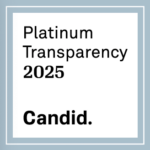FDA appears to be acting more like a development partner than a regulator in dealing with a “breakthrough” therapy designee, based on the experience of one sponsor.
“You actually can go in and ask for clarity on what’s expected,” Kunkel said.
Pharmacyclics Inc. Chief Medical Officer Lori Kunkel said early discussions about ibrutinib, which holds multiple designations, offer a better understanding for sponsors of regulatory expectations through more and easier access to FDA reviewers and earlier discussions of trial designs and other issues. Ibrutinib is being developed in partnership with Janssen Pharmaceuticals Inc.
Kunkel’s experience sheds more light on how FDA’s oncology review division, already among the quickest to embrace the new abbreviated pathway, is handling breakthrough products. She said that in the case of ibrutinib, the agency seems willing to provide a lot of help, including from the senior director level, to push the product through the review process.
Kunkel told “The Pink Sheet” in a May 30 interview that interactions with FDA about ibrutinib have included early and detailed clinical pharmacology and manufacturing discussions before Phase III, topics she said that usually would not come up until a pre-NDA meeting.
“I think the big plus has been instead of having discussions … at a pre-NDA meeting, we’re having sort of some of those discussions much earlier in development,” she said. “I think discussions on size of trials, power of trials, things like that are definitely happening earlier in development. It’s very helpful.”
FDA’s breakthrough designation has quickly become a popular, but somewhat unknown, abbreviated pathway since its creation as part of the 2012 FDA Safety and Innovation Act. It allows the agency to designate products that, based on early clinical evidence, could be dramatic advances from existing therapies and streamline their development.
Agency staff, including division directors, can be involved early and allow abbreviated clinical trials for designated products.
Office of Hematology and Oncology Products Director Richard Pazdur said May 31 during a press briefing at the opening of the American Society of Clinical Oncology annual meeting that the frequent meetings with breakthrough sponsors are to ensure an application can move quickly.
“The agency is going … to work with the sponsor on a step-by-step and sometimes on a monthly basis with teleconference and improved communication to ensure that the package that is submitted will be able to be expedited in the review system,” Pazdur said. “These meetings are not going to be landmark meetings, but much more of a continuous dialogue with sponsors looking at … preliminary and ongoing results.”
Pazdur said the regular sponsor interaction also could allow for trial endpoints or the control group size to be changed or adjusted.
“Frequently this may require change in regulatory advice, looking at different endpoints, even changing endpoints, looking at the enrollment on a trial, and even downsizing, potentially, some trials if the efficacy appears to be greater than previously expected,” he said.
As of May 31, the Center for Drug Evaluation and Research had received 53 breakthrough designation requests, granted 20 and denied 15. The Center for Biologics Evaluation and Research has received six requests, but had not granted a designation (see chart).
Eight of the designations are for oncologics, according to FDA. Discussion at ASCO indicated that many sponsors are considering the program across their cancer pipelines.
The ongoing activity has come without formal requirements about what constitutes a breakthrough therapy (“Industry Wants A Breakthrough Therapy, Even Without All The Standards” — “The Pink Sheet,” Oct. 29, 2012).
Addressing the plenary session of ASCO on June 2, FDA Commissioner Margaret Hamburg noted that the agency is working on a guidance document that will describe the breakthrough program, “explaining various criteria, including what we mean by such concepts as available therapy, unmet medical need and serious condition.”
The agency has previously announced it was working on a guidance that would cover all of its expedited approval programs, and hopefully clear up confusion (“FDA To Provide Expedited Approval Desktop Reference” — “The Pink Sheet,” Oct. 29, 2012).
More recently, CDER Director Janet Woodcock has noted the agency is learning from experience before putting together specific recommendations (“Breakthrough Therapies: FDA Not Writing A Scientific Guidance – Yet” — “The Pink Sheet,” Apr. 29, 2013).
Ibrutinib was among the first products to receive a designation and already has compiled three: for relapsed or refractory mantle cell lymphoma, Waldenstrom’s macroglobulinemia, and chronic lymphocytic leukemia or small lymphocytic lymphoma in patients with a 17p chromosome deletion (“FDA “Breakthrough Therapy” Designations” — Pharmaceutical Approvals Monthly, May 2013).
Open Dialogue, Rather Than Yes Or No
Pharmacylics received its breakthrough designations after initiating discussions with the agency about ibrutinib’s development and completing several Phase II studies.
Kunkel said FDA is not directing Pharmacyclics on how to construct the ibrutinib development program, but has made many more suggestions than typically expected in a meeting with agency staff.
“The sponsor still has to present a development plan, but I think that our interactions have been with the development plan we submit, it isn’t a ‘yes’ or ‘no’ any longer,” she said. “It’s ‘OK, think about this.’ ‘Let’s do this.’ There’s heavier discussion around statistics. So they’re not I would say directing … but there’s an open dialogue, a very open dialogue.”
She said dealing with some of these issues much earlier ensures her team can be “completely aware” of the necessary requirements.
“Clarity around things like stability, how much stability would be required,” she said. “Looking at processes, what sort of data would be required in the package … For [clinical pharmacology], it was looking at the acceptability of our ongoing program. What would be acceptable for the breakthrough filing and what would be acceptable for more of a post-marketing [setting].”
It seems the early meetings have allowed for a lot more certainty in the ibrutinib development program and helped avoid potential problems or assumptions, at least related to what FDA expects, because agency officials are telling the sponsor what should be done.
“Often times we assume that’s what the FDA’s going to want based on past experiences,” Kunkel said. “You actually can go in and ask for clarity on what’s expected.”
A lack of regulatory certainty has been among the complaints investors and sponsors have leveled at the agency in recent years, especially as the cost of drug development has increased. Jonathan Leff, of Deerfield Management, has been among those saying the uncertainty about agency reaction to trial results has pushed investment out of the biotech sector (“Should FDA Be Forced To Consider Development Time And Cost?” — “The Pink Sheet,” Nov. 12, 2012).
Some of the breakthrough discussions are already paying off for Pharmacyclics. The company has announced that it is moving up its timeline for filing an application to use ibrutinib in MCL to September, rather than the previous target of 2014.
While FDA touted the potential value of the earlier interactions, analysts and sponsors so far have been unable to actually describe or quantify the program’s worth. Sponsors in some cases have been reluctant to make promises about abbreviated FDA action, given their lack of experience with the program, and one analyst described it as not actually meaning much (“What’s Breakthrough Status Worth? Analysts Ask, But Companies Don’t Have Answers” — “The Pink Sheet,” May 13, 2013).
Call If There’s A Problem
Breakthrough sponsors also appear to have much more open access to their reviewers than typical applicants.
Kunkel said Pharmacyclics has been in contact with the review team throughout the project and has been encouraged to ask questions whenever they come up.
“FDA has encouraged us if we see any obstacles or we see any changes to contact them,” she said. “Although we haven’t had to use that, it’s not the usual 60-day meeting schedule, is my understanding. So you have more access to your reviewers than a standard procedure where you make a request and they have 60 days to schedule a meeting or a [teleconference].”
That is in contrast with the usual FDA practice. Typical NDAs warrant careful and controlled communication with FDA. Questions directed at reviewers can take a long time to answer because responses must go through project managers and more senior staff to ensure they are acceptable. More serious issues also could require formal meetings, which can take weeks or months to schedule.
The desire to improve communication during application reviews was among the reasons FDA and industry agreed as part of prescription drug user fee renewal to allow mid- and late-cycle meetings between the agency and sponsors to help iron out potential problems (“Buying Time: Industry Sacrifices Early To Gain Later With PDUFA V Review Model” — “The Pink Sheet,” Oct. 1, 2012).
PDUFA V also required FDA to hire more communications staff to help sponsors get answers to questions (“PDUFA V: Communications Liaisons Will Help Find Answers, Not Give Them” — “The Pink Sheet,” Oct. 15, 2012). However, those additions have not been made because of funding cuts caused by the budget sequester (“PDUFA Communications Hurt By Sequestration As Late-Stage Meetings Begin” — “The Pink Sheet,” Apr. 8, 2013).
A Familiar Review Team
The same FDA review team has been involved with ibrutinib’s development from the beginning, Kunkel said. Pazdur also has been involved in some conversations about ibrutinib, but Kunkel would not give further detail. She also said Division of Hematology Products Director Ann Farrell has been involved over the past year.
Pazdur and Farrell may be among the FDA officials most comfortable with the designation process. So far many breakthrough designations have been given to oncology products (“As “Breakthrough Therapy” Designations Rise, So Do Disclosure Questions” — “The Pink Sheet,” Apr. 15, 2013).
Woodcock told the Personalized Medicine Coalition recently that targeted therapies are expected to emerge as a major category of breakthrough products. Given the growing popularity of targeted oncology products, that may signal more oncology-based breakthrough therapies are on the horizon.
“Based on current submissions we expect to see a growing category of mostly targeted and highly effective drugs for serious conditions,” Woodcock said during a May 21 speech to the group. “Not all of them will actually work out when they’re studied further, but we expect a substantial proportion will. Potentially … they will have very rapid development programs and that’s what we’ve seen so far.”
http://www.elsevierbi.com/publications/the-pink-sheet/75/23/breakthroug…

